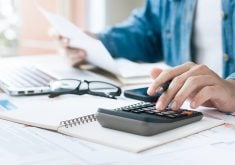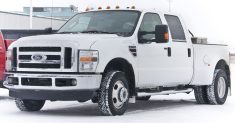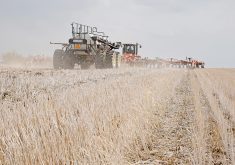Needing additional bin space is generally a good problem to have. It is also a sign that likely you will be facing another “problem” soon — too much taxable income.
One strategy to consider to mitigate your taxable income is to lease new bins instead of buying them.
Generally, from a tax perspective, a lease payment is a tax deduction in the year it is made. This can be beneficial compared to the tax depreciation rates set out by the government when bins or buildings are purchased. It is important to note that whether leasing or depreciation rates are more advantageous depends on the type of asset purchased.
Read Also

Proactive approach best bet with looming catastrophes
The Pan-Canadian Action Plan on African swine fever has been developed to avoid the worst case scenario — a total loss ofmarket access.
One common question is, “how can I lease an asset that seems like a fixture on my property that I will end up literately owning anyway?”
From a tax perspective, the courts have ruled that the legal nature of a contract must be followed (versus the economic underlying nature). Therefore, if there is a bona fide lease agreement in place that is legally enforceable, there is a strong case that it will be treated as a lease and the payment can be written off when made.
Let’s run through a simple example to show why this could make sense for your farm:
Jim is looking to add $100,000 worth of bins this year to his farm. He can either buy these bins outright or lease them over three years.
If Jim bought the bins he would get the following deductions for tax purposes:
- Year 1 — $15,000
- Year 2 — $8,500
- Year 3 — $7,650
The deductions would then continue to decrease and be spread out over more than 30 years.
However, if Jim leased the bins, making equal payments over three years, he would get the following deductions for tax:
- Year 1 — $33,333
- Year 2 — $33,333
- Year 3 — $33,333
He would then buy the bins for $1 at the end and see no further deductions past the third year.
You can see that a lease could speed up your deductions. Obviously, you need to have the adequate cash available to afford the accelerated payments, and the financing terms should make sense.
Leasing equipment such as combines, tractors and drills, versus buying, however, does not accelerate your deductions as in the example above. You get to claim tax depreciation of 30 percent on the cost of self-propelled equipment (45 percent in the first year right now) and 20 percent on pull-type equipment (30 percent in the first year right now). The tax depreciation tends to be as high as, if not higher than, the lease payments that would be made.
This is just one example of something you can consider from a tax planning perspective. If you are concerned your income will be high after this harvest, ensure you are reaching out to a professional to help assist with managing this tax exposure.
Colin Miller is a chartered accountant and partner with KPMG’s tax practice in Lethbridge. Contact: colinmiller@kpmg.ca. He would like to thank Riley Honess of KPMG for their assistance with writing this article.

















